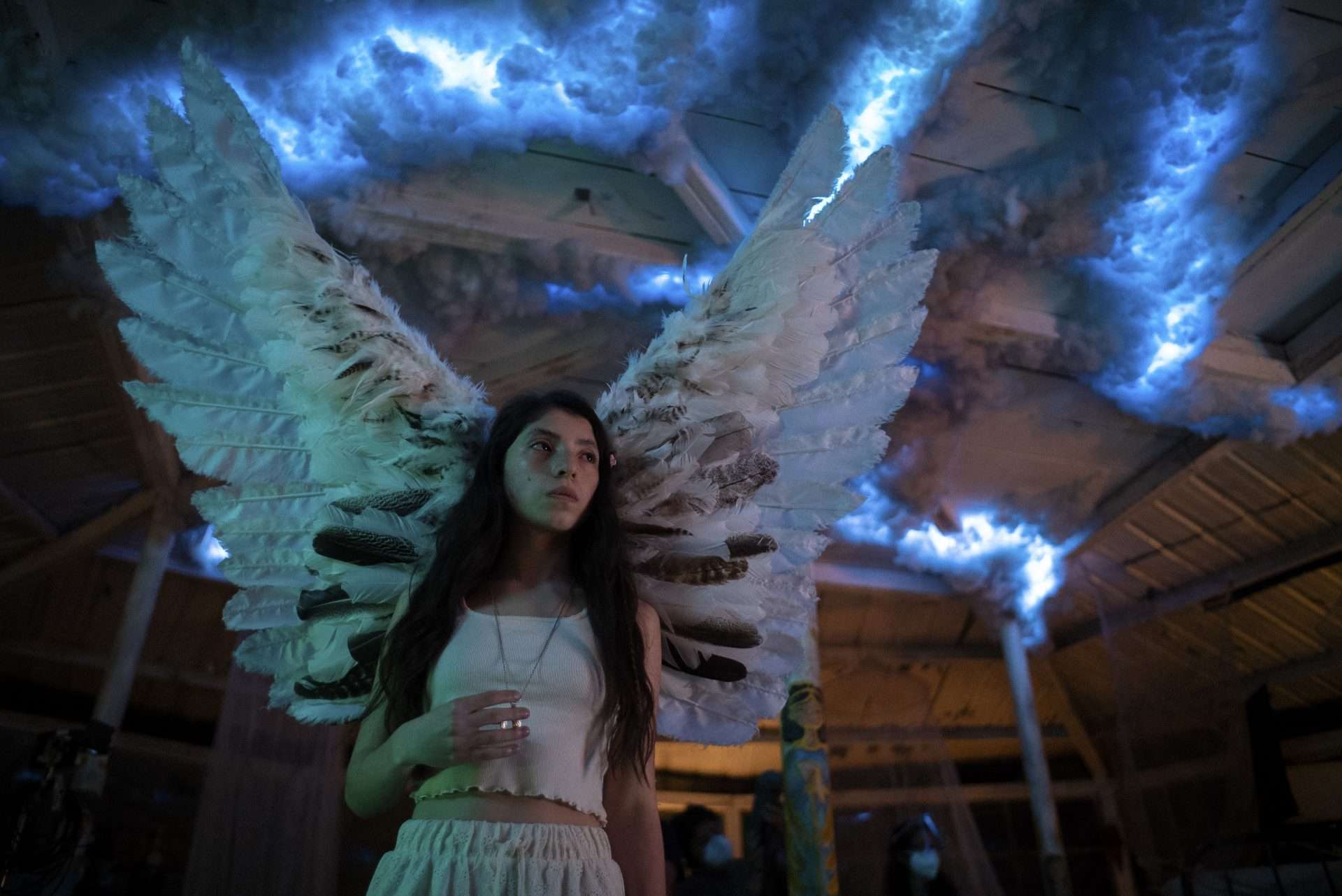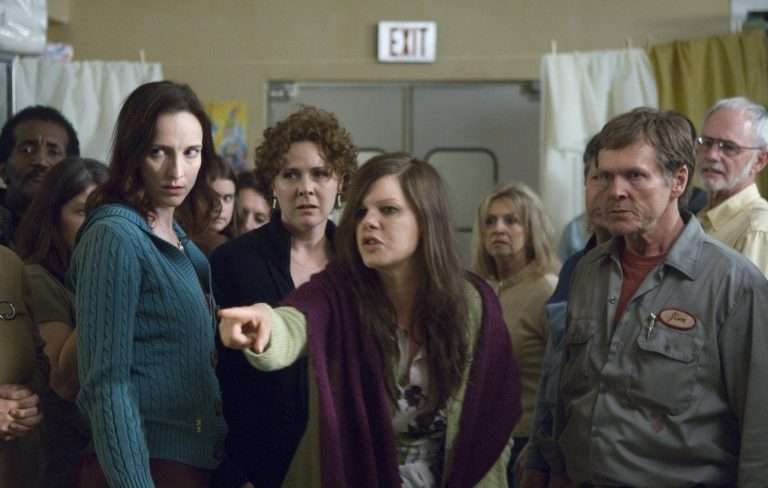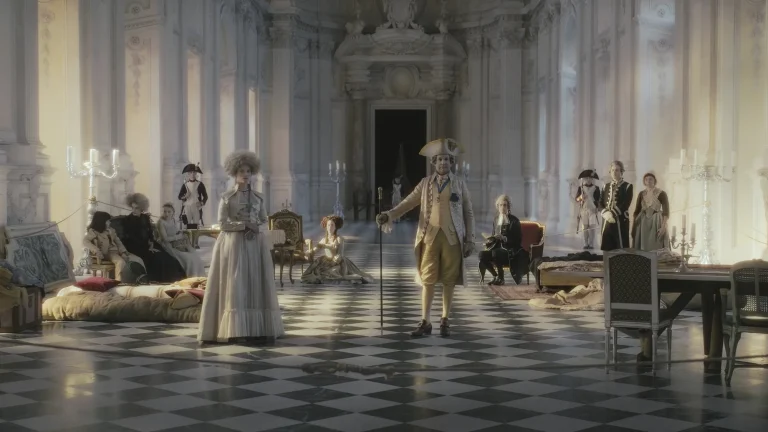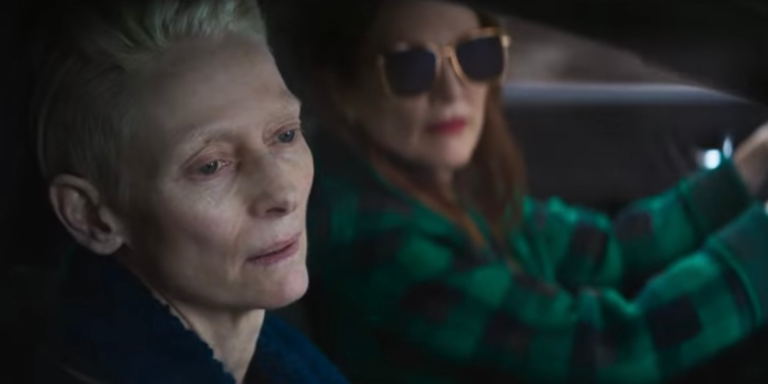Jayro Bustamante’s “La Llorona” proved to be an instant breakout for the young filmmaker, a chilling political statement on apathy in the face of the Mayan genocide from the yet under-represented sector of Guatemalan cinema. More than anything, Bustamante’s 2019 film proved that this upstart director had a knack for examining his country’s darkest corners by way of allusions to the supernatural, blending the horrific legends populating Guatemalan folklore with the horrific realities staining the country’s history. If “La Llorona” was an exercise in referencing the spectral as a means of punctuating reality, then the director’s follow-up, “Rita,” throws all semblance of suggestion out the window, jumping right into the mystical as a means of highlighting the nation’s truest atrocities.
The film’s title comes from a young runaway (fiery newcomer Giuliana Santa Cruz) who, as the film begins, is thrown into a state-run safe house for “delinquent” girls. Thrust into what is a prison in everything except the name for the crime of reporting her father’s sexual abuse, Rita finds herself assigned to a faction of the institution that calls themselves the Angels. This isn’t metaphorical, either; each of these posses finds themselves donning crude costumes inhabiting all manner of mythical creatures—from werewolves to fairies—and Rita’s troupe just so happens to strap crude angel wings to their shoulders as a sign of solidarity, a stark necessity in this absolute hellscape.
None of these costumes are particularly convincing, which is entirely the point, as Rita embellishes the artifice of these girls’ mystical personas; the angel outfits are if nothing else, a means of coping with these dreadful circumstances, and the fact that the guards of this safe house refer to them by these monikers anyway—“Angel 54, Fairy 27…”—indicates that these may very well be the identities they’re forced to inhabit in this captive space. They have their names, and they will always refer to each other by them, but within these walls, they’re little more than a number out of an assigned cell block.
Throughout the film, there’s no clear indication as to which elements of the mysterious are real and which are simply the inventions of traumatized kids, and it’s in this respect that Bustamante’s scrappy, almost DIY aesthetic proves worthwhile in communicating the lengths to which the young mind will go to shield itself from pain, despite the fact that its overwhelming nature will always send it back to the surface. These girls can spread those angel wings all they want to intimidate the guards or defend their friends, but at the end of the day, they aren’t flying anywhere.

It’s the truth in this tragedy that Bustamante never forgets, and it’s a miracle that such intentionally flimsy props and production design work, for the most part, in Rita’s favor rather than to its detriment. There is, however, a point at which suspension of disbelief can only take one so far, and the cutesy cheapness of the aesthetic begins to clash with some of the more stark instances of violence; the film’s overly serious color grading, especially, feels somewhat overcompensating, to the point where the artifice of the film occasionally feels more like a budgetary restraint than a creative decision. “La Llorona” proved Bustamante adept at using constraints to his fullest advantage in a claustrophobic setting, but “Rita” sometimes finds itself suffocated by its reliance upon our investment in what’s clearly fake.
As “Rita” approaches its climax—an event that constitutes the real-life basis of this film and should remain unspoiled due to its pivotal placement—Bustamante finds room to let the clashing elements of his tone and props coalesce into the purest form of mental escape from the anguish of institutional abuse. As with the rest of the film, it’s somewhat clumsy and uneven (particularly when one character needs to be slowed down in some way, and the contrived manner in which the film goes about it is borderline comical), but like many films about childhood coping and survival—think “Beasts of the Southern Wild,” “We the Animals” or “Tigers Are Not Afraid”—”Rita” digs for the underlying authenticity of its imaginings to make that finale’s impact truly felt.
Though its marriage of the magical and the real isn’t quite harmonious enough to keep “Rita” from becoming an occasional endurance test, Jayro Bustamante maintains the spiritual essence of the subject by never letting its purposefully shabby deception overshadow its reason for existing in the first place. These angels may not fly, but their chilling, palpable touch will surely reach a few souls.









